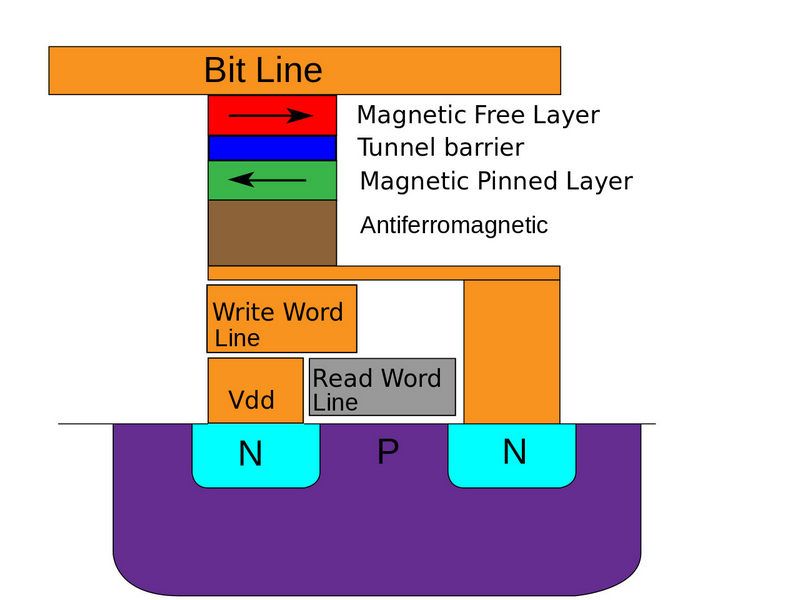An EETimes report shows Intel’s MRAM (Magnetoresistive Random Access Memory), which is suitable for large scale production. MRAM is a non-volatile memory technology, which means it can retain information even in the event of a power failure, making it a storage device rather than a standard RAM.
MRAM memory is being developed to replace DRAM memory (RAM memory) and NAND flash memory in the future.
MRAM promises to be much easier to manufacture and offers superior performance. The fact that MRAM has a proven ability to achieve response times of 1 ns, better than the currently accepted theoretical limits for DRAM, and much higher write speeds (up to a thousand times faster) compared to NAND flash technology, these are the reasons why this type of memory is so important.
It can store information for up to 10 years and withstands 200 degrees Celsius
However, the technical questions are not quite clear. Although 99.9% of the blue ones are still used, allegedly using a special 22FFL FinFET class lithographic process, they do not reveal any details about this technology. Interestingly, the Wikichip specialists argue that this is a 14 nm development version of the technology and not 22 nm, which might suggest a name. We also don’t know much about the operation of Intel’s MRAM, apart from the fact that it uses the Gaussian phenomenon
With the current features, MRAM enables data storage for 10 years at 125 degrees Celsius and a high degree of resistance. In addition to the high strength, the integrated 22nm MRAM technology has been credited with a bit rate of over 99.9%, which is an amazing performance for a relatively new technology.
It’s not exactly known why Intel uses a 22 nm process to make these memories, but we can intuitively say that it’s not about saturating the 14 nm production used by its CPU processors. They also did not comment on how long we have to wait to see this memory in action for the PC market.
